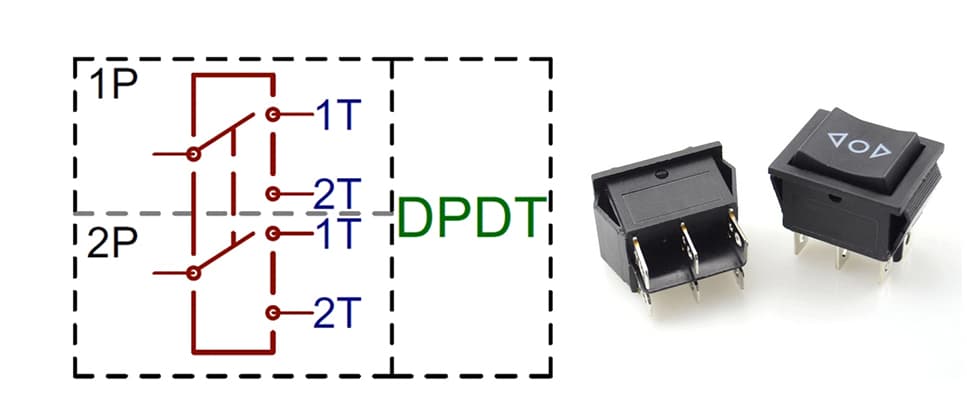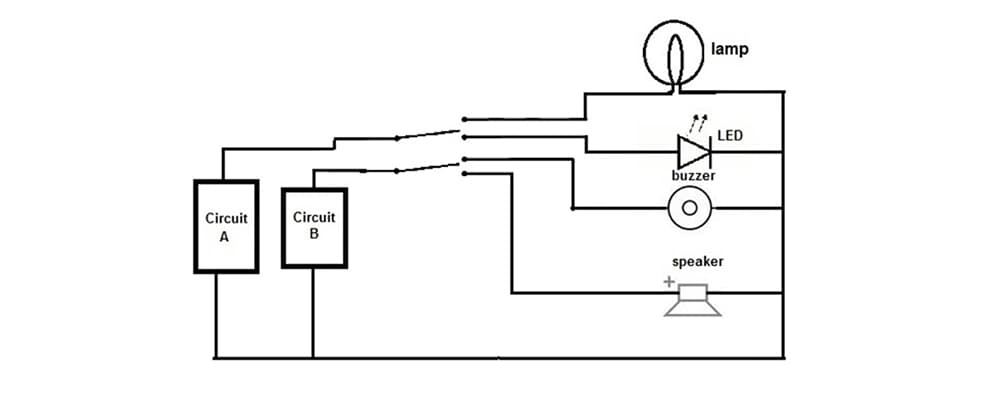What is a DPDT switch? If a switch contains two input terminals and each of them moves between their own two output terminals, it is a Double Pole Double Throw (DPDT) switch.
Hence, the total number of inputs and outputs is, correspondingly, two and four.

Note its two input terminals correlate. In other words, their position alters simultaneously.
In a DPDT switch, there are two modes for circuit routing.
This is because the input terminal here can be in either closed or open position. This is true for both DPDT switch’s input terminals. With a DPDT switch, you can wire 4 units simultaneously. That is why it is regarded as changeable and easy to adapt to different needs for circuit routing.
Double Pole Double Throw Switch (DPDT) Circuit
In fact, this is like if you compile two SPST switches together and make them work interconnected, getting a DPDT switch.
To get a full understanding of how a DPDT switch works within a circuit, study the following figure.

The 4-device wiring diagram is quite a good demonstration of two modes you can execute with a DPDT switch.
If you put it into the mode-1 position (a closed position for the device № 1(a lamp, for example) and device № 3 (a buzzer, for example) and open one for the device № 2 (a LED, for example) and device № 4 (a speaker, for example)), you feed the devices № 1 and 3 and make them stay on. In this case, you do not feed the devices № 2 and 4 and, thus, they stay off.
However, the situation gets reversed if you put the DPDT switch into the mode-2position (an open position for the devices № 1 and 3 and closed one for the devices № 2 and 4).
In this case, you do feed the devices № 2 and 4 (keep them on) and do not feed the devices № 1 and 3 (keep them off).
To sum up, it means you get dynamic 2-mode capacity.